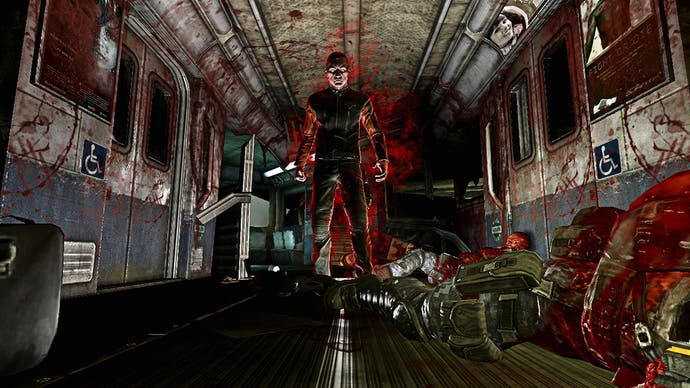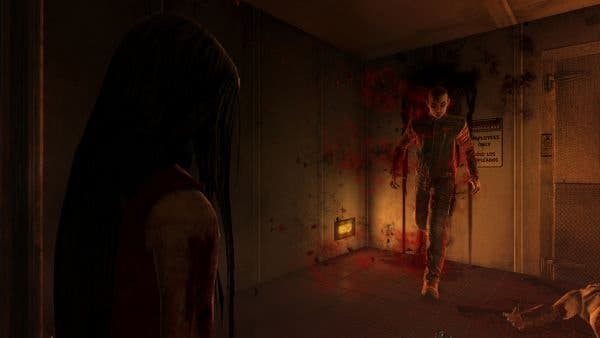FEAR 3
Ghost trick.
While inhabiting someone else's body, Paxton gains their unique powers. If he dies or spends too long in possession of a host, they'll expire in a bloody mess, leaving the incorporeal Fettel to fend for himself. He can collect glowing red skulls that are dropped by every enemy he defeats to extend his stay. There's a wonderful balancing act between being encouraged to play recklessly while in possession of a body, yet cautiously as soon as you're stripped of your skin. It gives the game an arcade-like quality that's a far cry from skulking around in the shadows as Point Man.
As an added bonus, Fettel is unlocked for every singe-player mission once you've completed it as Point Man. Playing as Fettel is such a unique experience that it could easily headline its own game. That it exists in addition to the default campaign, and can be experienced in tandem with it in co-op, is practically a revelation.
The one downside to co-op is that it makes everything less frightening, as the other player can trigger canned scares ahead of you. It's not a big loss since, disappointingly, the game is not scary in the first place. Most of the scares are based around interactive cut-scenes, robbing you of control. It's obvious that you're actually safe, so whatever apparitions appear are very clearly smoke and mirrors. For a game that's so innovative elsewhere, it's disenchanting to see these cheap tricks deployed so regularly.
Aside from co-op, F.E.A.R. 3 hosts four multiplayer modes. Robbed of slow-mo, one would be forgiven for thinking multiplayer would be a forgettable mess, but F.E.A.R. 3 continues to innovate here by eschewing standard modes like deathmatch and capture the flag for unique four-player modes.
Its most conventional is Convulsions, in which a team of four must ward off ever-increasing waves of enemies. Between waves, players can run outside their base and bring back supply crates or reinforce barricades. It's fun, but a little too slow to get going.

Next is Soul King, where each player begins as a wraith capable of possessing enemies. Wraiths are swift and agile, moving like the camera chasing Ash in Evil Dead 2. Every enemy you kill drops a skull worth points, and whoever has the most points becomes the soul king, making their location known to the other players. If you die in wraith form you lose half your souls, so it's easy to go from first to last in a heartbeat, which I found a little too topsy-turvy.
My favourite two modes were F**king Run and Soul Survivor. The former has you and your squad mates outrunning an oncoming wall of smoke while fighting enemies. If one person gets caught by the wall, it's game over for everyone. You can revive each other; taking care of your squad while booking it is extremely tense.
In Soul Survivor, one player is randomly chosen to be a wraith while the other players fight AI enemies. The wraith's goal is to convert the squad into spirits too. This is done by possessing an AI enemy, killing a soldier, then holding a button prompt by their downed body for a few seconds. Once they're converted they'll switch sides, and their comrades they fought so hard to protect are now the enemy. The other players won't know which enemies are AI and which are real people with a more devious agenda.

Despite subpar scares and a shoddy narrative that's simultaneously threadbare and convoluted, F.E.A.R. 3 is a finely crafted action game and an exceptionally inventive shooter. More varied, colourful and refined than its predecessors, F.E.A.R. 3's single-player campaign would be enough to recommend on its own.
Supplementing it with Fettel's brilliant body-swapping mechanic is a masterstroke. F.E.A.R. 3 is like a Siamese twin; two great games sharing the same campaign. Coupled with four unique multiplayer modes, there's a lot of lasting value here. Don't let the ridiculous acronym fool you - this is a surprisingly sophisticated symphony of bullets and bloodshed.


